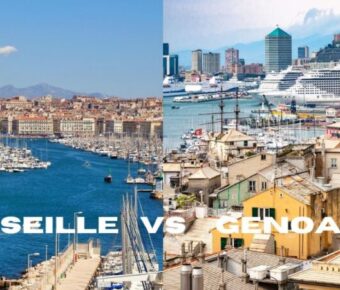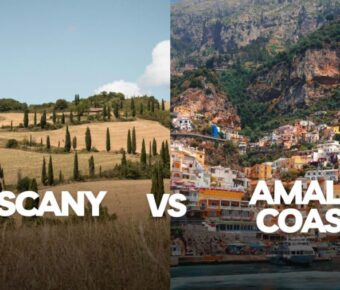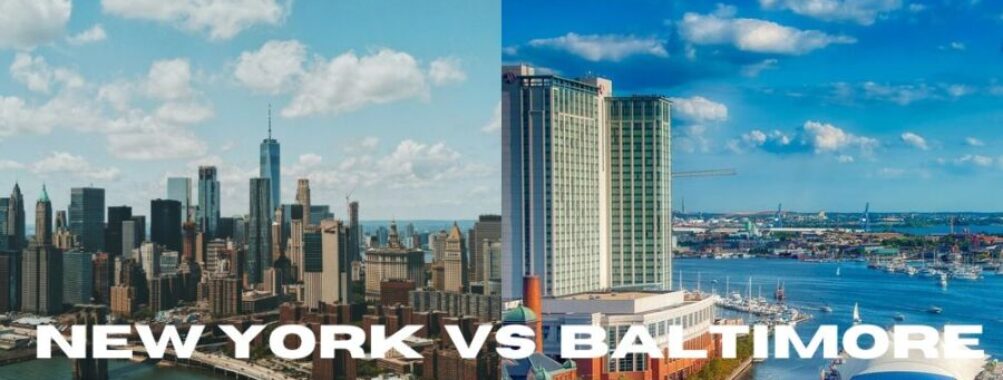
New York vs Baltimore: A Tale of Two Cities’ Hidden Gems and Local Secrets
Two cities, each with unique personalities. New York dazzles with its towering skyscrapers and fast-paced lifestyle, while Baltimore charms with its historic harbor and laid-back vibe. Living in Baltimore costs 45% less than New York City, with housing expenses in New York being nearly three times higher than Baltimore.
The choice between these cities depends on what matters most to a traveler. New York offers world-famous attractions, Broadway shows, and endless entertainment options. Baltimore attracts visitors with its fresh seafood, friendly locals, and rich maritime history.
Both cities have distinct neighborhoods worth exploring. New York’s diverse boroughs each tell their own story, from Brooklyn’s artistic spirit to Manhattan’s iconic landmarks. Baltimore’s neighborhoods range from the cobblestone streets of Fells Point to the cultural hub of Mount Vernon.
Contents
- Historical Overview
- Founding of New York City
- Founding of Baltimore
- Demographics and Population
- Population Density Comparison
- Cultural Diversity
- Economic Comparison
- Job Markets
- Unemployment Rate
- Key Industries
- Cost of Living Analysis
- Housing Costs
- Transportation Expenses
- Food and Groceries
- Lifestyle Comparison
- Entertainment and Nightlife
- Restaurants and Dining
- Outdoors and Recreation
- Education Systems
- Public and Private Schools
- Colleges and Universities
- Transportation and Commuting
- Public Transit Options
- Walkability and Biking
- Parking and Traffic
- Climate and Environment
- Weather Patterns
- Seasonal Changes
- Safety and Crime Rates
- Local Law Enforcement
- Community Safety Initiatives
- Cultural Attractions
- Museums and Galleries
- Theater and Performing Arts
- Historic Landmarks
- Moving to Baltimore vs. New York
- Relocation Considerations
- Helpful Moving Tips
- Frequently Asked Questions
- What are the key differences in cost of living between New York and Baltimore?
- How do the climates of New York and Baltimore compare?
- What are some deciding factors when choosing between living in Baltimore or New York?
- In terms of sports, how does the football rivalry between New York and Baltimore teams highlight their cities’ cultures?
- What is the average travel distance between New York and Baltimore, and what are some travel tips?
- What unique cultural experiences can Baltimore offer that differ from those in New York?
- More Travel Guides
Historical Overview
New York and Baltimore emerged as vital colonial settlements that shaped early American commerce and culture. Both cities grew from humble trading posts into major urban centers, each with their own distinct path to prominence.
Founding of New York City
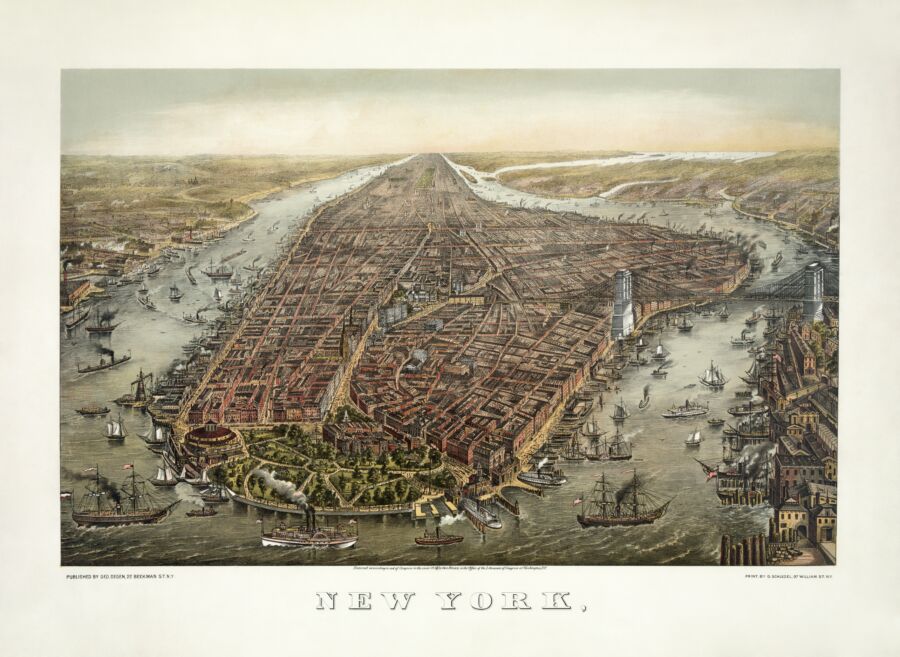
The Dutch established New Amsterdam in 1624 as a fur trading post on Manhattan Island. They picked this spot for its excellent harbor and access to the Hudson River.
The British took control in 1664 and renamed it New York after the Duke of York. The city grew quickly as a trading hub thanks to its prime location. Ships from Europe could easily reach its deep natural harbor.
By the late 1700s, New York had become one of America’s busiest ports. Ships brought goods from around the world while the Erie Canal connected the city to the Great Lakes.
Founding of Baltimore

Baltimore got its start in 1729 when the Maryland colony created a port for shipping tobacco. The city was named after Lord Baltimore, who founded Maryland.
The harbor played a big role in Baltimore’s growth. Ships could sail far inland to load cargo, making it easier than other ports. Local shipbuilders became famous for their swift Baltimore Clippers.
By 1800, Baltimore had the largest free Black population in America. The city built churches, schools and businesses owned by African Americans. This created opportunities not found in many other places at that time.
The port helped Baltimore become a major manufacturing center. Iron works, flour mills, and other factories popped up along the waterfront.
Demographics and Population
New York and Baltimore show stark differences in their population numbers and cultural makeup. New York’s massive population dwarfs Baltimore’s smaller community, creating distinct urban environments and social dynamics.
Population Density Comparison
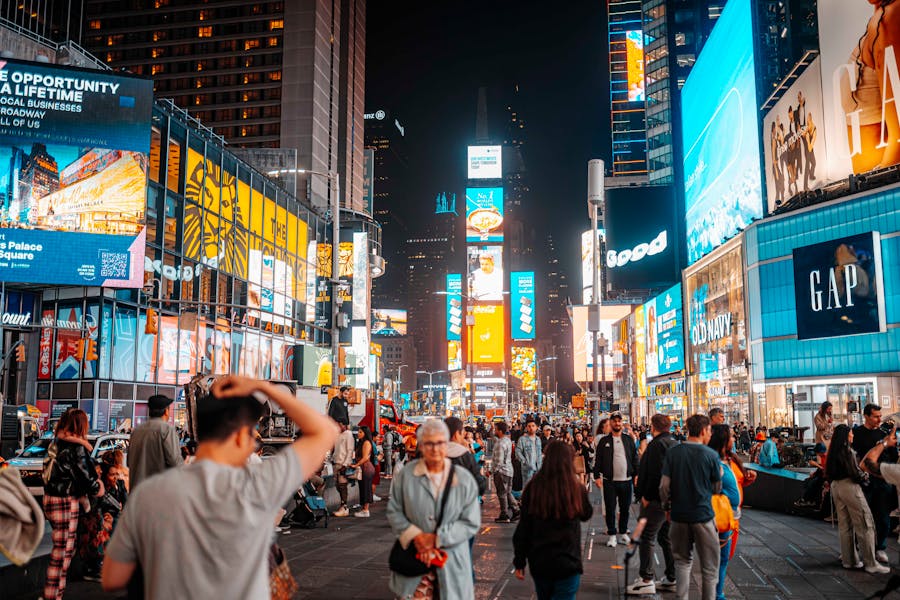
New York City has a population of 8.5 million people, which is about 14 times larger than Baltimore’s 620,000 residents. This massive difference shapes each city’s character and living experience.
The population trends between these cities tell different stories. While New York continues to grow and attract new residents, Baltimore has lost over 74,000 people (11.5%) in recent years.
Manhattan, New York’s central borough, packs more people into its limited space than almost anywhere else in America. The dense living creates a fast-paced atmosphere with busy streets and crowded subway cars.
Cultural Diversity

Both cities embrace their multicultural identities, but express this diversity in unique ways. New York’s neighborhoods like Chinatown, Little Italy, and Russian Brighton Beach showcase its global cultural mix.
Baltimore’s diversity appears in historic areas like Little Italy and Greek Town, though on a smaller scale than New York. Each neighborhood maintains its own cultural traditions and community spirit.
Local festivals and events in both cities celebrate their immigrant heritage. You’ll find authentic food markets, cultural celebrations, and community gatherings that reflect each city’s unique blend of cultures.
The cities share strong African American cultural influences, with Baltimore’s population having deeper historical roots in the region compared to New York’s more recently arrived immigrant communities.
Economic Comparison
New York and Baltimore show stark economic differences, with salary levels, job markets, and living costs varying significantly between these East Coast cities. The average worker in New York earns 12% more than in Baltimore, yet faces much higher costs.
Job Markets

New York City offers a vast job market with numerous Fortune 500 companies and global firms. The city serves as a hub for finance, media, tech, and creative industries. Entry-level salaries tend to be higher, but the intense competition can make landing a job challenging.
Baltimore’s job market is smaller but growing steadily. The city offers strong opportunities in healthcare, education, and government sectors. Johns Hopkins University and Hospital create thousands of jobs. The defense industry also provides stable employment due to nearby military installations.
A typical salary in Baltimore needs to be only $37,910 to match a New York salary of $60,000. This means your money goes much further in Baltimore.
Unemployment Rate

Baltimore’s unemployment rate sits slightly higher than New York’s. The city faces ongoing challenges with job creation in certain neighborhoods. Some areas struggle with limited access to job opportunities.
New York maintains lower unemployment rates thanks to its diverse economy. The city bounces back quickly from economic downturns due to its varied job sectors. Tourism and hospitality provide many entry-level positions.
Key Industries
New York’s economy centers on:
- Financial services
- Media and entertainment
- Real estate
- Tourism
- Fashion
- Technology
Baltimore’s main economic drivers include:
- Healthcare and medical research
- Education
- Port and maritime trade
- Defense and cybersecurity
- Manufacturing
- Biotechnology
Both cities see growth in tech startups and innovation sectors. Baltimore attracts companies with lower operating costs, while New York draws businesses seeking global reach.
Cost of Living Analysis
Living expenses between New York and Baltimore show stark differences, with Baltimore offering significantly lower costs across major spending categories. The cost of living in Baltimore is 45% less expensive than New York City.
Housing Costs
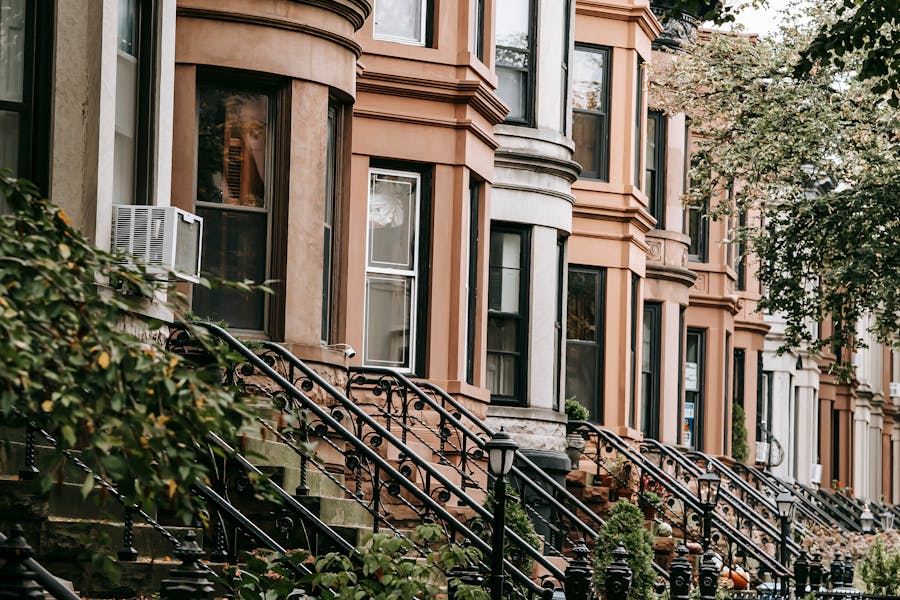
Rent prices in New York dwarf those in Baltimore. A typical one-bedroom apartment in New York costs $3,500 monthly, while similar units in Baltimore average $1,400.
Property values tell a similar story. The median home price in New York sits at $750,000, compared to Baltimore’s more modest $300,000.
Utilities add to the gap between these cities. New York residents pay about $200 monthly for basic utilities, while Baltimore residents spend closer to $150.
Transportation Expenses
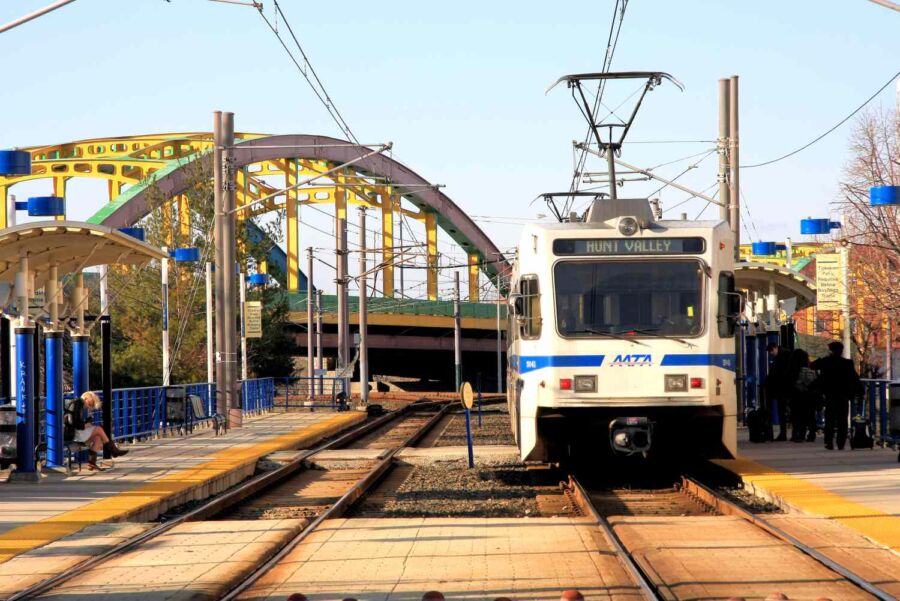
Public transit costs less in Baltimore, with a monthly pass priced at $75 compared to New York’s $130 MetroCard.
Car ownership brings different challenges in each city. Baltimore drivers spend less on parking, with monthly garage rates around $150. New York parking often exceeds $400 monthly.
Gas prices run about 15% higher in New York than Baltimore. Insurance rates also favor Baltimore, with annual premiums averaging $1,800 versus New York’s $2,500.
Food and Groceries
Grocery shopping hits wallets harder in New York. A gallon of milk costs $5 in New York but $3.50 in Baltimore.
Restaurant meals show big price gaps. A casual dinner for two in New York runs $80-100, while Baltimore diners might spend $50-65 for similar meals.
Weekly grocery bills for a single person average $100 in Baltimore. The same shopping list in New York typically costs $150.
Local markets and food halls offer better deals in Baltimore. The city’s famous markets like Lexington Market provide fresh food at prices 30% below New York’s comparable options.
Lifestyle Comparison
New York and Baltimore offer distinct lifestyle experiences shaped by their unique cultures, neighborhoods, and attractions. Each city provides its own special blend of entertainment, dining, and outdoor activities that appeal to different types of residents and visitors.
Entertainment and Nightlife
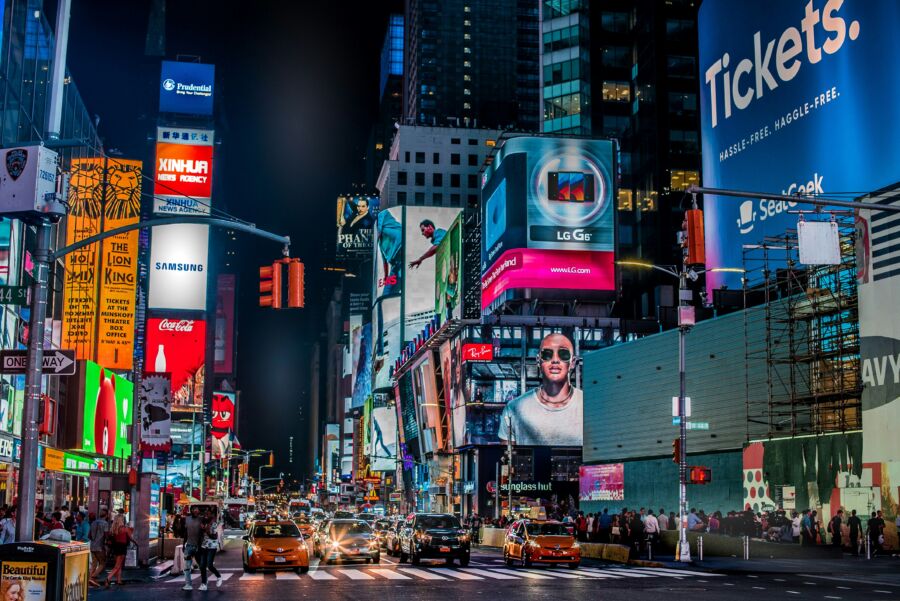
New York’s nightlife is legendary, with Broadway shows, world-class music venues, and clubs that stay open until dawn. Times Square never sleeps, featuring countless theaters, comedy clubs, and live music spots.
Baltimore’s nightlife centers around vibrant neighborhoods like Fells Point and Federal Hill. These areas come alive with local bands playing at intimate venues and friendly pubs where everybody knows your name. The city’s historic charm adds character to its entertainment scene.
Sports fans in New York can catch Yankees or Mets games, while Baltimore residents cheer for the Orioles at Camden Yards. Both cities host major concerts and events, though New York attracts more international acts.
Restaurants and Dining
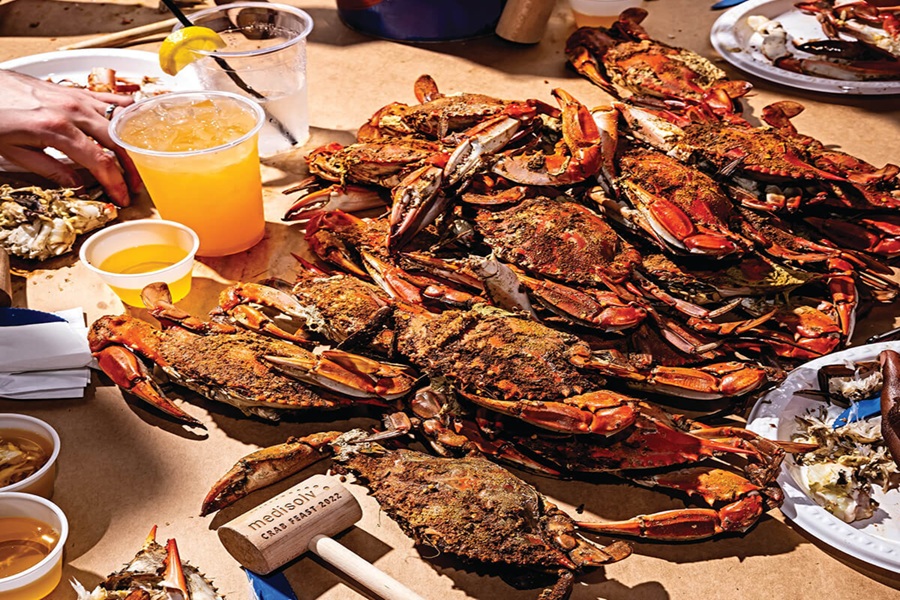
New York’s food scene spans from Michelin-starred restaurants to iconic pizza joints and food trucks. Each neighborhood offers distinct flavors – from Little Italy’s traditional spots to the diverse eateries of Queens.
Baltimore shines with its seafood, especially the famous Maryland blue crabs. The city’s food markets, like Lexington Market, serve local specialties and fresh catches. Little Italy serves authentic pasta dishes in family-owned restaurants.
Food prices vary significantly between the cities. A nice dinner in Baltimore might cost half what you’d pay in Manhattan. Both cities feature excellent food halls – Chelsea Market in New York and Cross Street Market in Baltimore.
Outdoors and Recreation
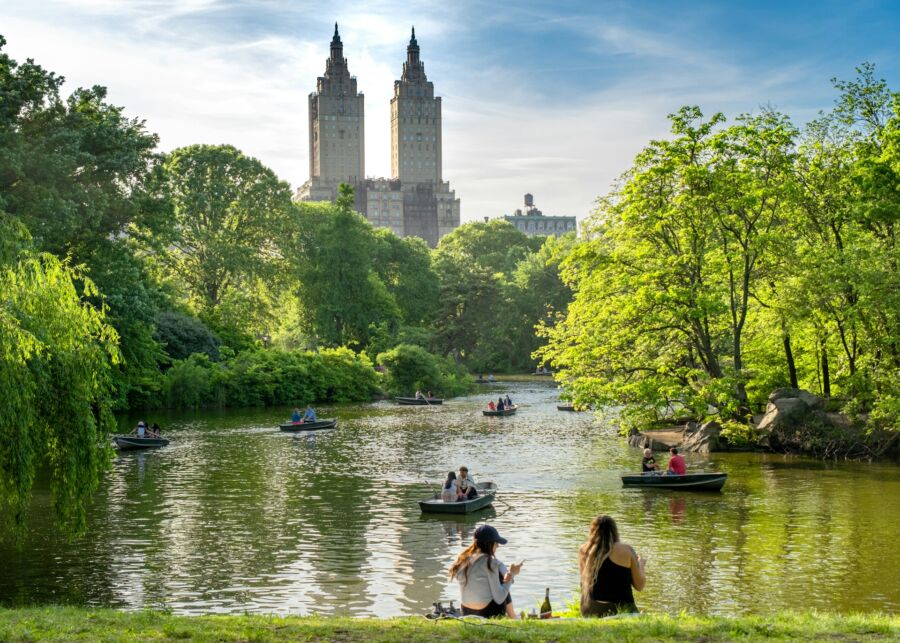
Central Park stands as New York’s green heart, offering 843 acres of paths, lakes, and recreational spaces. The High Line provides an elevated park experience, while the city’s waterfront parks offer stunning views.
Baltimore’s Inner Harbor walkway connects to various waterfront parks and attractions. Patterson Park features a historic pagoda and tennis courts. The city provides easier access to nature, with fewer crowds than New York’s popular spots.
Water activities thrive in both cities. Baltimore’s harbor hosts sailing adventures and water taxis, while New York offers beach escapes to Coney Island or the Rockaways.
Education Systems
Both New York and Baltimore show distinct differences in their education systems, from spending levels to classroom sizes. New York’s lower per-student spending contrasts with Baltimore’s smaller class sizes and higher graduation rates.
Public and Private Schools
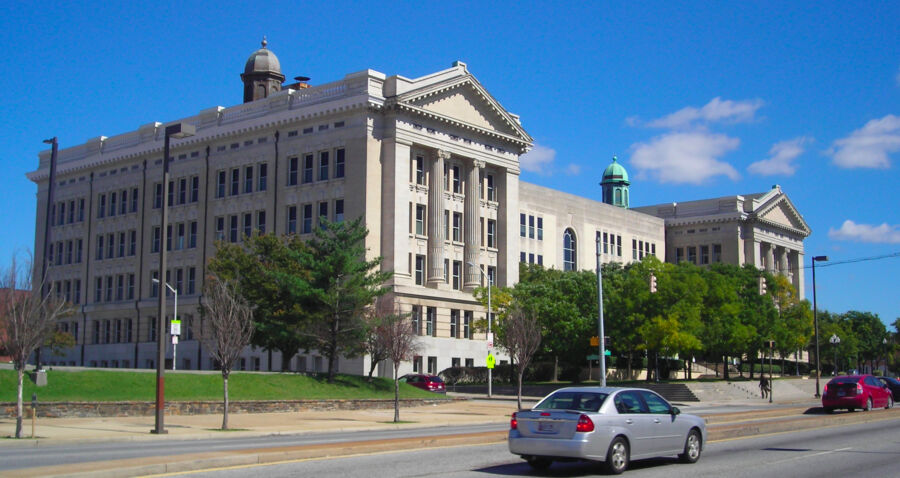
New York City’s massive public school system serves over a million students across its five boroughs. The city maintains lower student-to-teacher ratios than Baltimore, giving kids more individual attention in the classroom.
Baltimore’s public schools invest more money per student than New York does. Recent data shows Baltimore spending about 10% more per pupil compared to NYC.
The graduation rates tell an interesting story. Baltimore’s high schools graduate a higher percentage of students than New York’s do, with nearly 4% more students completing their diplomas.
Colleges and Universities

New York stands out as a major hub for higher education with over 100 colleges and universities. Notable institutions include Columbia University, NYU, and dozens of CUNY campuses spread across the boroughs.
Baltimore shines with prestigious schools like Johns Hopkins University, known worldwide for medicine and research. The city also houses Loyola University Maryland and University of Maryland, Baltimore.
Both cities attract thousands of college students each year. Their universities create strong partnerships with local businesses, giving students real-world experience through internships and research projects.
The college atmosphere adds youthful energy to each city’s culture. Campus areas feature busy cafes, bookstores, and cultural events that benefit both students and locals.
Transportation and Commuting
New York and Baltimore offer distinct transportation experiences, with NYC having more extensive public transit but longer commute times. Baltimore provides easier parking and less traffic congestion at the cost of fewer transit options.
Public Transit Options
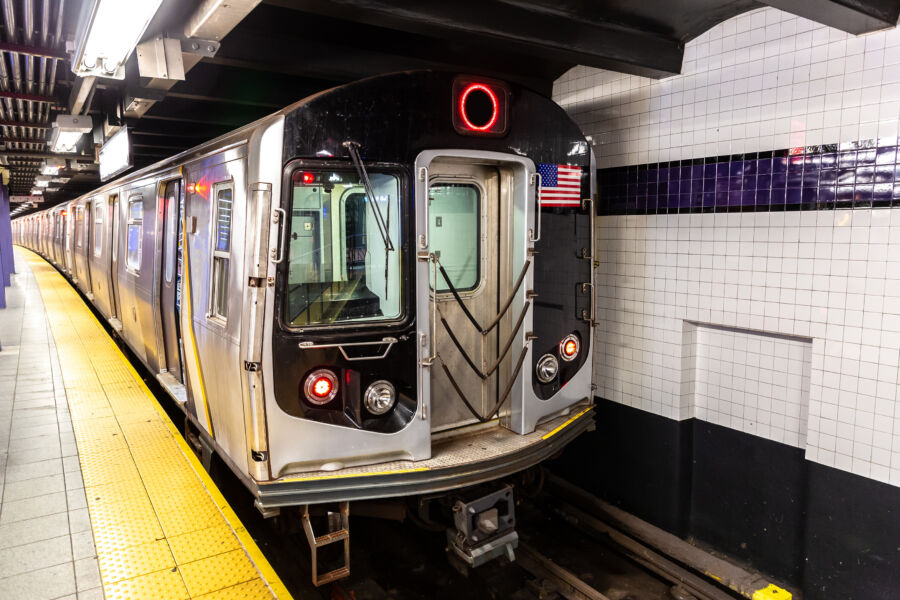
NYC’s subway system runs 24/7 with over 470 stations across all boroughs. The MTA network includes buses, commuter rail, and ferries that connect the entire metro area.
Baltimore’s transit system is more modest but efficient. The Metro SubwayLink and Light RailLink serve key areas, while local buses reach most neighborhoods. The MARC train connects Baltimore to DC for commuters.
NYC transit costs about $2.90 per ride with unlimited monthly passes available. Baltimore’s base fare is $1.90, making it a more budget-friendly option.
Walkability and Biking
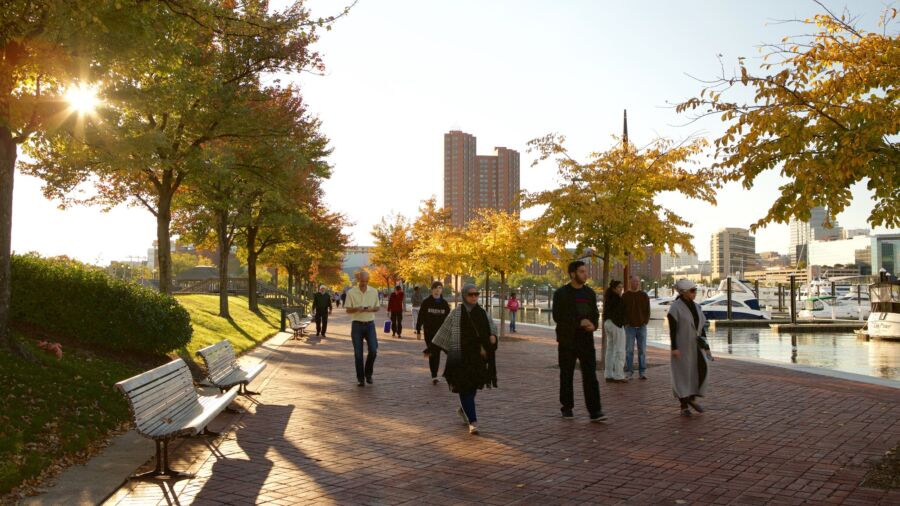
NYC ranks as one of America’s most walkable cities. Most neighborhoods have shops, restaurants, and services within easy walking distance. Protected bike lanes criss-cross Manhattan and Brooklyn.
Baltimore offers good walkability in areas like Inner Harbor, Fells Point, and Mount Vernon. The city has expanded its bike infrastructure with new lanes and the Baltimore Bike Share program.
Both cities face challenges with winter weather affecting walking and biking conditions. NYC tends to clear snow from major pedestrian routes faster.
Parking and Traffic
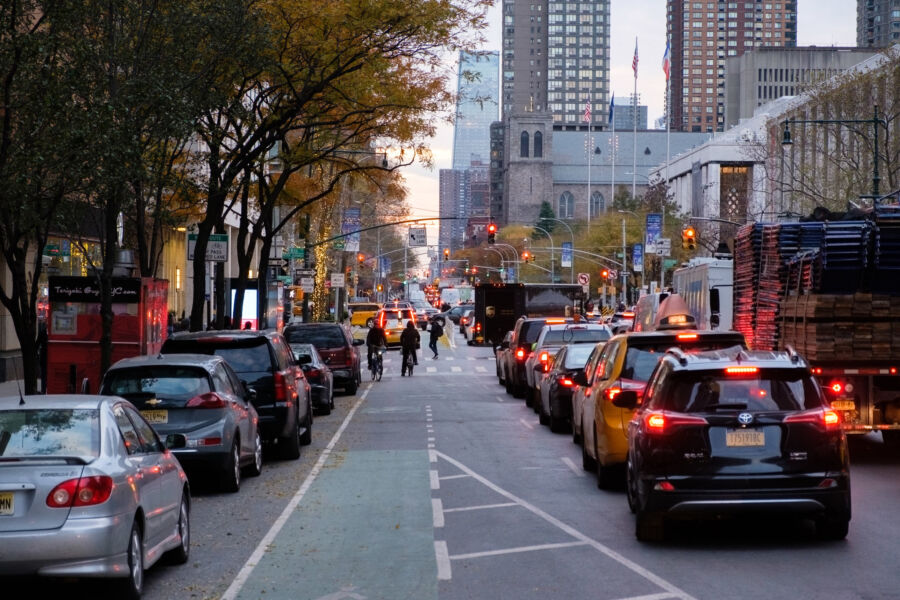
Parking in NYC is notoriously difficult and expensive. Garage rates often exceed $40 per day in Manhattan. Street parking requires careful attention to complex rules and alternate side regulations.
Baltimore offers more abundant and affordable parking options. Most neighborhoods have street parking available, and garage rates typically stay under $20 daily.
Traffic data shows NYC commuters face 43.6-minute average travel times. Baltimore’s average commute is 31.5 minutes – about 10 minutes shorter than NYC.
NYC’s traffic congestion ranks among the worst in the US. Baltimore experiences rush hour delays but with less intensity and shorter duration.
Climate and Environment
New York and Baltimore share similar weather patterns due to their proximity, yet each city has distinct climate characteristics that shape daily life. Both experience all four seasons, with Baltimore having slightly warmer summers and New York getting more snow.
Weather Patterns
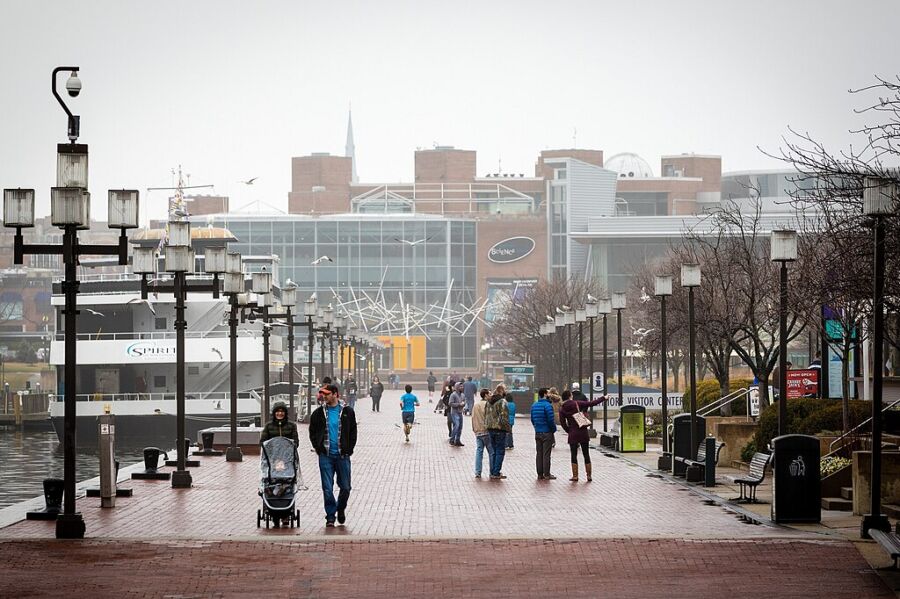
New York gets more rain and snow than Baltimore each year. The Big Apple sees about 47 inches of rainfall and 25 inches of snow annually. Baltimore stays a bit drier with 42 inches of rain and 19 inches of snow.
The humidity can be tough in both cities during summer months. New York’s concrete jungle often traps heat, creating those famous sticky summer days that locals know too well.
Both cities fall into the humid subtropical climate zone. This means warm, muggy summers and mild to cool winters with occasional cold snaps.
Seasonal Changes
Summer temperatures hit harder in Baltimore, with July highs reaching 88°F compared to New York’s more moderate 84°F. This difference might seem small, but it’s noticeable when walking city streets.
Winter brings similar cold to both cities. Baltimore’s January lows drop to 27°F, while New York dips slightly lower to 26°F.
Spring and fall are the most pleasant seasons in both cities. These transition months bring mild temperatures and lower humidity, perfect for exploring parks and outdoor attractions.
The cities share similar patterns of seasonal change, with leaves turning color in October and spring flowers blooming in April.
Safety and Crime Rates
New York and Baltimore show major differences in their crime statistics, with Baltimore facing bigger safety challenges. New York has made significant progress in reducing crime over recent years, while Baltimore continues to work on improving public safety.
Local Law Enforcement
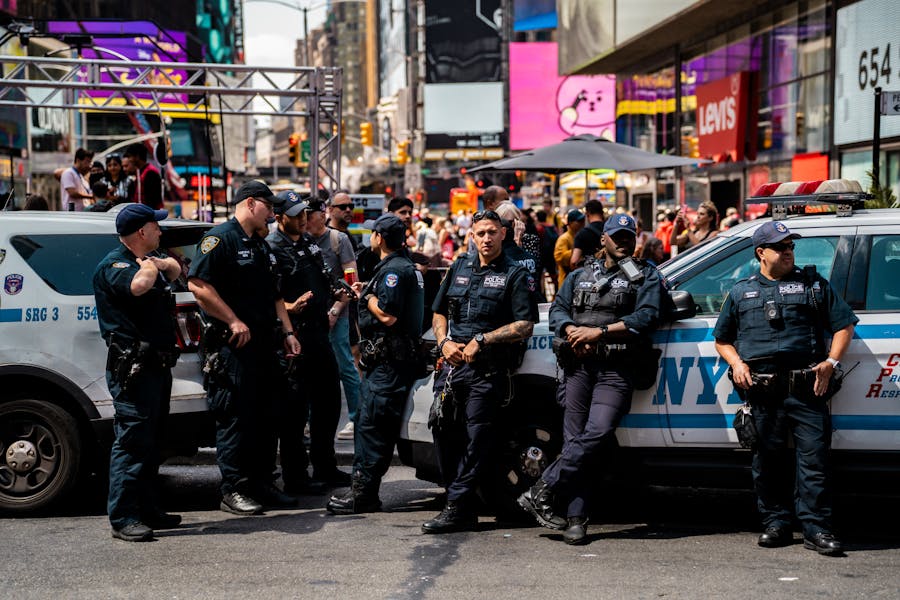
The NYPD maintains one of the largest police forces in America, with about 35,000 officers serving New York’s population. They use data-driven policing strategies and community outreach programs that have helped cut crime rates significantly.
Baltimore Police Department operates with roughly 2,300 officers. They face unique challenges, including staffing shortages and the need to rebuild community trust.
Crime stats paint a clear picture:
- Baltimore’s violent crime rate is 77.8 (per 100k residents)
- New York’s violent crime rate is 28.2
- Baltimore’s property crime rate is 67.6
- New York’s property crime rate is 24.9
Community Safety Initiatives
New York runs several successful neighborhood watch programs. Local groups work with police to spot suspicious activity and share safety tips. The city also uses security cameras and improved street lighting in high-traffic areas.
Baltimore has launched new safety programs to tackle crime. These include:
- Violence prevention teams
- Youth outreach services
- Block captain programs
- Crime reduction zones
Many Baltimore neighborhoods have started their own safety patrols. Local groups organize walking escorts for seniors and kids going to school.
Each city works with churches and community centers to create safe spaces for residents. These partnerships help build stronger ties between citizens and law enforcement.
Cultural Attractions
Both cities offer rich cultural experiences with world-class museums, vibrant theater scenes, and significant historic sites that tell America’s story. New York’s cultural scene is massive and globally famous, while Baltimore’s attractions are more intimate and deeply connected to American history.
Museums and Galleries

The Metropolitan Museum of Art stands as New York’s crown jewel, housing over 2 million works spanning 5,000 years of human creativity. The Museum of Modern Art (MoMA) showcases cutting-edge contemporary pieces that shape artistic trends worldwide.
Baltimore’s art scene centers around the Baltimore Museum of Art, home to the largest Matisse collection in the world. The American Visionary Art Museum celebrates self-taught artists with unique exhibits you won’t find anywhere else.
New York’s Museum Mile along Fifth Avenue packs nine museums into a single mile. The Natural History Museum draws millions with its dinosaur halls and planetarium shows.
The Baltimore and Ohio Railroad Museum tells the fascinating story of American rail history. The National Great Blacks in Wax Museum presents powerful exhibits about African American history.
Theater and Performing Arts
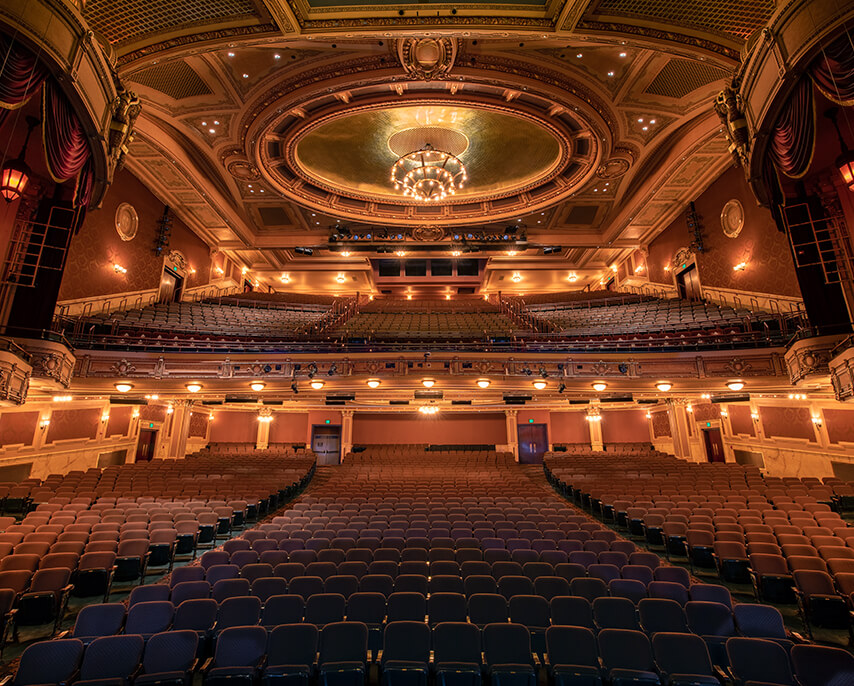
Broadway’s 41 professional theaters form the heart of American theater, staging world-famous musicals and plays that attract theater lovers worldwide. Off-Broadway venues offer experimental shows and rising talent.
The Lincoln Center hosts the Metropolitan Opera, New York City Ballet, and New York Philharmonic in stunning performance spaces.
Baltimore’s Hippodrome Theatre brings Broadway shows to Maryland in a beautifully restored 1914 building. Center Stage, the state theater of Maryland, produces bold new works and fresh takes on classics.
Historic Landmarks
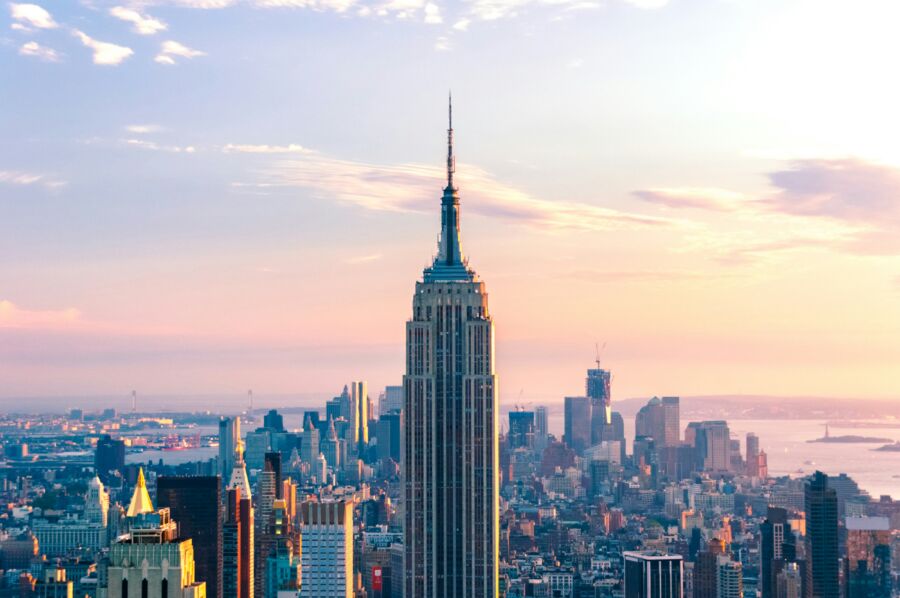
The Statue of Liberty and Ellis Island stand as symbols of American immigration and freedom in New York Harbor. The Empire State Building and Chrysler Building showcase Art Deco architecture at its finest.
Fort McHenry in Baltimore inspired the Star-Spangled Banner and protected the city during the War of 1812. The historic ships in the Inner Harbor, including the USS Constellation, bring maritime history to life.
The Edgar Allan Poe House preserves the famous writer’s Baltimore home. Mount Vernon, Baltimore’s cultural district, features stunning 19th-century architecture and the first Washington Monument.
Moving to Baltimore vs. New York
Moving between these major East Coast cities requires careful planning and consideration of costs, lifestyle changes, and practical logistics. The cities offer distinct experiences with significant differences in expenses, housing markets, and daily living.
Relocation Considerations
The cost of living gap between these cities is dramatic. Baltimore’s housing costs are 73% lower than New York’s, making it much easier to find affordable homes or apartments. A $4,000 monthly budget in New York stretches to cover just 1.4 months of expenses, while in Baltimore it lasts 1.9 months.
Transportation needs vary greatly between cities. New York ranks 94th out of 100 cities for driving conditions, with longer commute times averaging 10 minutes more than Baltimore. Still, NYC’s extensive public transit system means many residents don’t need cars.
Job markets differ significantly. New York offers more diverse career opportunities, especially in finance, media, and tech. Baltimore’s job market focuses on healthcare, education, and government sectors.
Helpful Moving Tips
Research neighborhoods that match your lifestyle and budget. In Baltimore, consider areas like Canton or Federal Hill for city living, while New York newcomers might explore Queens or Brooklyn for more space.
Plan moves during off-peak seasons (October-April) when rental prices and moving services cost less. Book movers at least 2 months ahead in New York due to high demand.
Get rid of unnecessary items before moving. Storage units in New York cost 2-3 times more than Baltimore. Plus, NYC apartments tend to be smaller.
Consider temporary housing first. This gives time to explore different areas and find the right permanent spot. Short-term rentals are pricier but worth avoiding rushed decisions.
Frequently Asked Questions
Living in New York or Baltimore brings unique advantages in terms of costs, lifestyle, and cultural experiences. Each city offers distinct opportunities for work, entertainment, and daily life.
What are the key differences in cost of living between New York and Baltimore?
Living costs in Baltimore run about 37% lower than New York City. A person needs to earn $37,910 in Baltimore to maintain the same living standard as in New York.
Food costs 39% less in Baltimore compared to New York. A basic lunch with a drink costs $16 in Baltimore versus $22 in NYC.
Housing makes up the biggest cost difference between these cities. The average person’s salary covers living expenses for 1.9 months in Baltimore, while only lasting 1.4 months in New York.
How do the climates of New York and Baltimore compare?
Baltimore enjoys slightly milder winters than New York, with less snowfall and fewer days below freezing. Both cities experience hot, humid summers.
Spring arrives earlier in Baltimore, usually by 2-3 weeks. Fall colors peak first in New York, creating a longer autumn viewing season between the two cities.
What are some deciding factors when choosing between living in Baltimore or New York?
Job opportunities and salary differences matter – employers in Baltimore pay about 12% less than New York employers.
Transportation costs vary greatly. New York ranks among the worst U.S. cities for driving, while Baltimore offers more reasonable commute times.
Crime rates need consideration. Some Baltimore neighborhoods face safety challenges, though most tourist and residential areas remain secure.
In terms of sports, how does the football rivalry between New York and Baltimore teams highlight their cities’ cultures?
The Ravens-Jets matchups showcase Baltimore’s blue-collar pride against New York’s big-market flash. Local fans pack sports bars and stadiums for these games.
Both cities take football seriously, but Baltimore shows special passion for the Ravens as their primary sports identity. The Giants add another layer to New York’s diverse sports scene.
What is the average travel distance between New York and Baltimore, and what are some travel tips?
The trip spans roughly 190 miles, taking about 3.5 hours by car or 2.5 hours by train on Amtrak.
Train travel proves most convenient between these cities. Parking challenges make driving in New York tough, while Baltimore offers easier car access.
What unique cultural experiences can Baltimore offer that differ from those in New York?
Baltimore’s Inner Harbor features fresh seafood markets and maritime museums that celebrate its port city heritage. The city’s row houses and neighborhood festivals create tight-knit community feels.
The National Aquarium and Fort McHenry provide educational experiences unique to Baltimore’s history. Local art scenes focus more on grassroots creativity than New York’s commercial galleries.
Small music venues and theaters in Baltimore let visitors get closer to performances. Many spots offer live jazz and indie shows without New York’s premium pricing.

